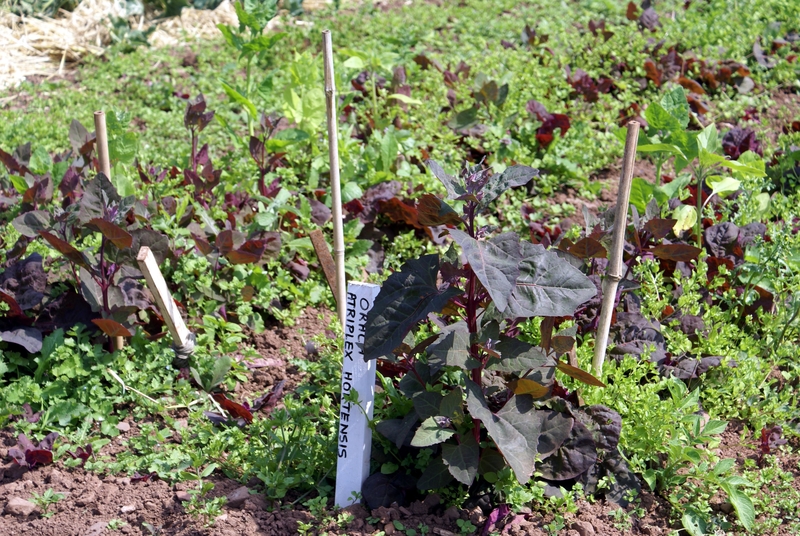“Fall” Crops can be planted mid to late summer and still yield a harvest in most places before a hard frost (or with protection, even beyond that point.)
Here are a few to consider as well as some general fall crop advice.
To determine the optimal planting date, simply count backward from the average date of first frost in your area (find the date here) by the number of “days to maturity” listed on the seed package. Orach, for example, requires 50 to 60 days from sowing seed to maturity, so if you live in Memphis where the first frost usually comes around November 13th, plant it by mid-September. In Minneapolis, where the frost comes around October 5th, plant it no later than mid-August.
A cool weather vegetable rooted in the ancient culinary traditions if the Middle East and Mediterranean Basin, fava beans are more often grown in North America as a nitrogen-fixing “cover crop” than for food. But most people who’ve tasted steamed favas—they are nutty like lima beans and slightly sweet like a tender pole bean—can’t understand why the rest of the world hasn’t caught on. Favas are most often consumed when the beans are green and tender, though you may also dry them to use in soups. This robust, pest-resistant crop makes its own nitrogen, so no fertilizer is required. Make sure to choose varieties selected for flavor, such as Sweet Lorane or Aquadulce, rather than the more bitter varieties intended as cover crops.
There are two types of salsify—one has black skin and longer roots, the other is shorter and white—but both have the same growing requirements, which are minimal: plant them in loose, modestly fertile soil, water when dry, and let nature do the rest. Salsify matures slowly, but is quite cold hardy, and will overwinter in the ground in all but the most frigid climates, allowing for a spring harvest. A blanket of mulch helps them survive in the snow and ice. The tender greens that sprout in spring are also edible, and if you leave a few roots to grow until they send up flower stalks, you’ll be rewarded with stunning mauve blossoms in summer. Roast, bake, or steam the roots as you would potatoes or parsnip.
The tree onion, grows year after year, unlike ordinary onions which must be replanted annually. Top-set onions can be planted in any season, though they grow best when established in late summer. Grown this way, they won’t produce a crop until the following spring, when small, shallot-size bulbs will emerge at the top of the three-foot stalks, rather than underground. In fall, the stalks topple over and deposit any unharvested bulbs on the ground, essentially sowing the next crop. For this reason, they are also referred to as walking onions—they slowly spread themselves throughout the garden in this manner over many years. They are much less finicky to grow than other onions, though they have a slightly more pungent flavor. Seed is rarely available; order bulbs to plant instead.
In a survival situation, growing “late” crops is one way of maximizing your growing space and ensuring fresh vegetables late into the fall and even early winter.
The key is to make sure you are accurate in your estimation regarding frost – generally, go with the earliest frost date in the past few years and use that as a marker; you can always protect plants if frost comes that early and if it comes later, well, all the better!
To learn some more tips for late season growing, check out Modern Farmer!
